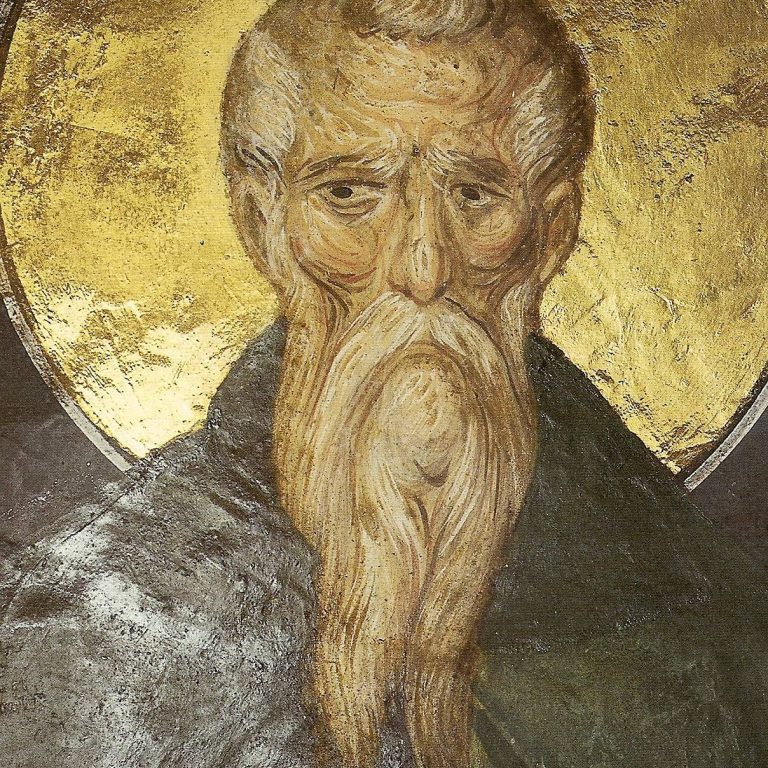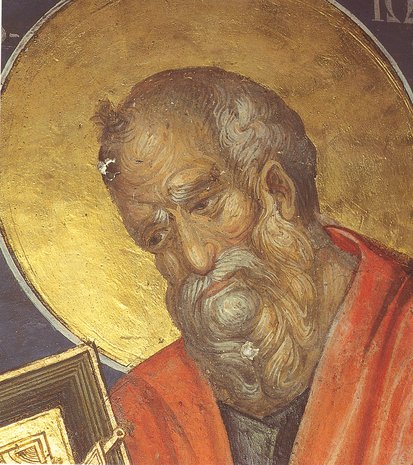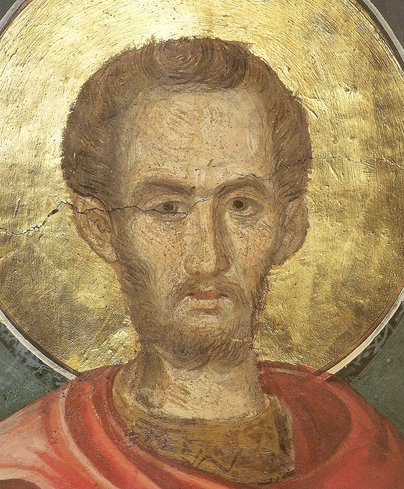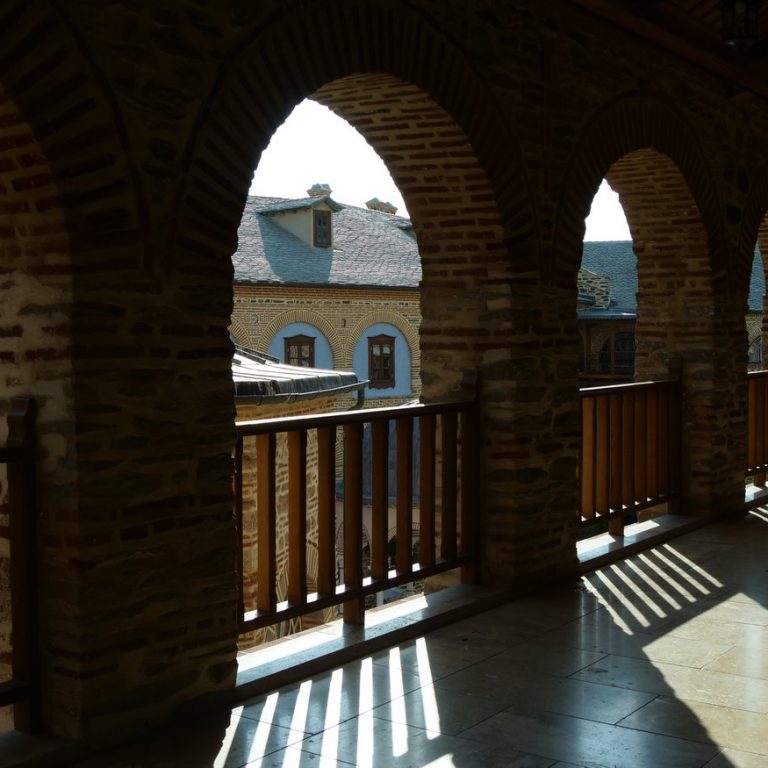The Frescoes Of The Cathedral
The first fresco of the Cathedral of the Monastery dates to the second half of the 14th century, and specifically to the decade of 1360-1370; in other words, to the period of the founding of the Monastery. The frescoes which survive from this period are distinguished by – according to Prof Efthimios Tsigaridas, who has thoroughly studied them – their high artistic quality, and are rightly considered to be works belonging to the School of Manuel Panselinos.
Today, after the research and the partial cleaning, it can be confirmed that the frescoes of the cathedral were painted at different phases. The oldest paintings are located on the vertical walls of the central nave and the arch which supports the floor, and specifically: (a) on the east wall of the entrance hall, where the impressive representation of the Δέηση (Supplication) is prominent, depicting the emblematic form of Christ enthroned, while the Virgin Mary and St John the Baptist humbly approach Him with open hands, (b) on the western wall of the central nave, where the Dormition of the Virgin Mary and great, holy personages in monasticism (i.e., Adonios the Great, St Euthymios the Great, St Theodosios, Leader of the Community (Κοινοβιάρχης), Pachomios the Great, St Athanasios the Athonite, and others) are portrayed, and (g) in areas that were recently cleaned in the second zone at the left, exquisite depictions of the forefathers and Iosef the Monk were uncovered. According to Prof Tsigarida, this series of pictures corresponds to its counterpart in the nave of the Protaton in Karyes.
These older frescoes were repainted during the 1854 fresco-painting of the cathedral by the well-known icon artist Mathaios Ioannos of Naoussio, as is confirmed by a relevant inscription on the lintel of the door leading from the central nave to the entrance hall.
Apart from the frescoes that were repainted, other works by Mathaios Ioannis dating to the more recent phase of painting include the depictions of the Ecumenical Synod, the words of Christ (Math. 25, 35-36:42-43) and the parable of the ten virgins in the entrance hall, the dome paintings, the arches, and the small domes.
Recently, the fragment of the fresco depicting the Prophet Iezekiel preserved today in the Sacristy, has been identified as being the work of Theofanis of Crete. This fresco most likely came from the dome of the chapel of the Three Hierarchs, which had been located in the north section of the entrance hall and demolished in 1847. It is considered likely that all the frescoes in the demolished chapel can be attributed to Theofanis.
Today, after the research and the partial cleaning, it can be confirmed that the frescoes of the cathedral were painted at different phases. The oldest paintings are located on the vertical walls of the central nave and the arch which supports the floor, and specifically: (a) on the east wall of the entrance hall, where the impressive representation of the Δέηση (Supplication) is prominent, depicting the emblematic form of Christ enthroned, while the Virgin Mary and St John the Baptist humbly approach Him with open hands, (b) on the western wall of the central nave, where the Dormition of the Virgin Mary and great, holy personages in monasticism (i.e., Adonios the Great, St Euthymios the Great, St Theodosios, Leader of the Community (Κοινοβιάρχης), Pachomios the Great, St Athanasios the Athonite, and others) are portrayed, and (g) in areas that were recently cleaned in the second zone at the left, exquisite depictions of the forefathers and Iosef the Monk were uncovered. According to Prof Tsigarida, this series of pictures corresponds to its counterpart in the nave of the Protaton in Karyes.
These older frescoes were repainted during the 1854 fresco-painting of the cathedral by the well-known icon artist Mathaios Ioannos of Naoussio, as is confirmed by a relevant inscription on the lintel of the door leading from the central nave to the entrance hall.
Apart from the frescoes that were repainted, other works by Mathaios Ioannis dating to the more recent phase of painting include the depictions of the Ecumenical Synod, the words of Christ (Math. 25, 35-36:42-43) and the parable of the ten virgins in the entrance hall, the dome paintings, the arches, and the small domes.
Recently, the fragment of the fresco depicting the Prophet Iezekiel preserved today in the Sacristy, has been identified as being the work of Theofanis of Crete. This fresco most likely came from the dome of the chapel of the Three Hierarchs, which had been located in the north section of the entrance hall and demolished in 1847. It is considered likely that all the frescoes in the demolished chapel can be attributed to Theofanis.




